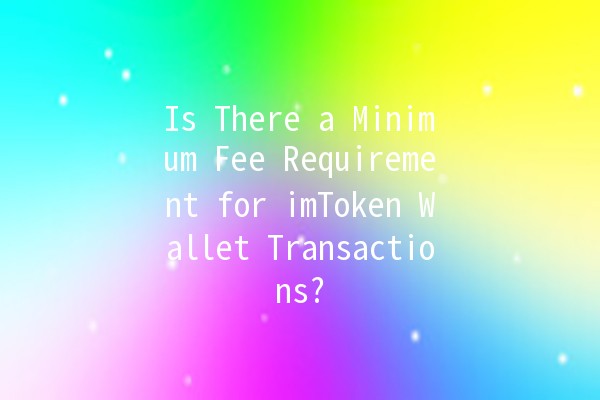In the everevolving landscape of cryptocurrency, fees remain a pivotal topic among users, especially when it comes to wallet services like imToken. This article delves into the critical matter of whether imToken imposes a minimum fee for its transactions. Understanding transaction fees, their intricacies, and how they pertain to imToken can empower users to make informed decisions when managing their digital assets.
Transaction fees are essential elements of blockchain technology. They serve to incentivize miners or validators to process transactions. In the case of imToken, an Ethereum and multichain wallet, transaction fees can fluctuate based on network congestion and other factors.

When using the imToken wallet, users might wonder if there exists a minimum fee requirement. As of now, imToken does not impose a strict minimum fee, but several factors determine the fees associated with transactions.
Based on user feedback, many have highlighted that the flexibility in fee structure allows for tailored transaction experiences, which can be particularly advantageous in optimizing costs.
Several key factors impact the transaction fees in imToken:
If a user wishes to send ETH when the network is experiencing high traffic, opting to pay a slightly higher fee can ensure that their transaction is prioritized over lowerfee transactions, reducing waiting times significantly.
To make the most out of your imToken experience and manage transaction fees efficiently, here are five productivity enhancement techniques:
Example: If network congestion levels are low, you can save money by adjusting your transaction time accordingly.
Example: For nonurgent transactions, consider using lower fees to reduce costs.
Example: Notifications can inform you when fees drop, allowing you to execute transactions when it’s the most economical.
Example: Being aware of potential protocol changes can prepare users for shifts in transaction costs.
Example: Familiarize yourself with concepts like "Gwei," as this will assist in making informed decisions about how much to pay for transactions.
Transaction fees are primarily determined by network congestion, the size of the transaction, and userdefined settings. On hightraffic days, fees naturally rise due to increased demand.
It is generally not possible to send tokens without incurring a fee. However, users can minimize fees by choosing optimal transaction times and customizing their fee settings.
Users can monitor current fees through the imToken interface, which provides estimates based on the current network status.
Setting the transaction fee too low can delay transaction confirmations. In extreme cases, a transaction may not go through at all.
ImToken aims for transparency in its fee structure. Users should be aware of network fees that may apply at the point of transaction but should not find additional hidden charges.
Once a transaction is broadcast to the network, it cannot be canceled. Therefore, selecting an appropriate fee is crucial before confirming the transaction.
Understanding the fee structure when using the imToken wallet is vital for optimizing your cryptocurrency transactions. While there is no stringent minimum fee requirement, users can benefit from customizing their fee settings based on realtime network conditions. Utilizing these insights and strategies will empower users to conduct their transactions seamlessly and economically, enhancing their overall experience in the cryptocurrency space.